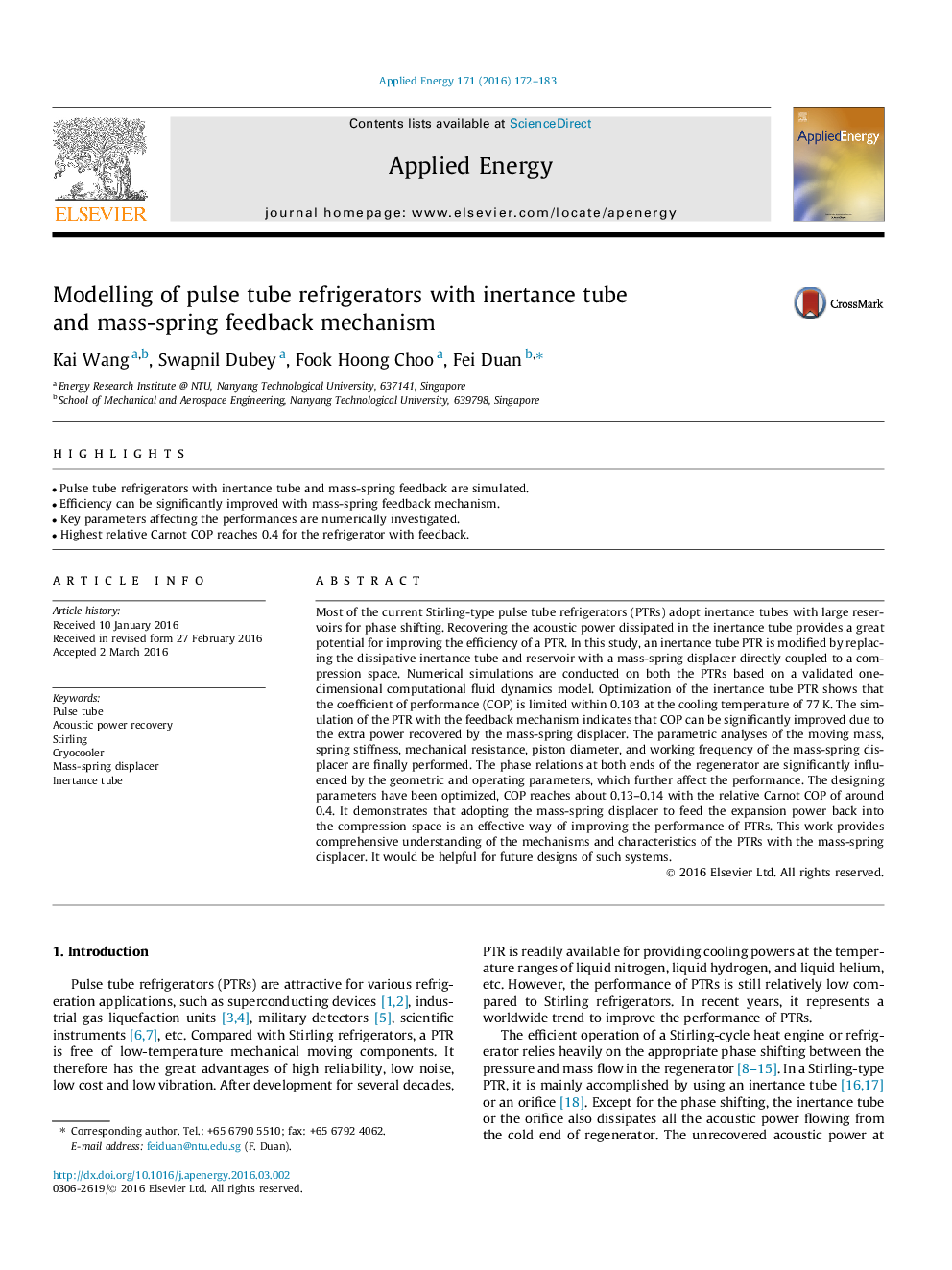| Article ID | Journal | Published Year | Pages | File Type |
|---|---|---|---|---|
| 6683274 | Applied Energy | 2016 | 12 Pages |
Abstract
Most of the current Stirling-type pulse tube refrigerators (PTRs) adopt inertance tubes with large reservoirs for phase shifting. Recovering the acoustic power dissipated in the inertance tube provides a great potential for improving the efficiency of a PTR. In this study, an inertance tube PTR is modified by replacing the dissipative inertance tube and reservoir with a mass-spring displacer directly coupled to a compression space. Numerical simulations are conducted on both the PTRs based on a validated one-dimensional computational fluid dynamics model. Optimization of the inertance tube PTR shows that the coefficient of performance (COP) is limited within 0.103 at the cooling temperature of 77Â K. The simulation of the PTR with the feedback mechanism indicates that COP can be significantly improved due to the extra power recovered by the mass-spring displacer. The parametric analyses of the moving mass, spring stiffness, mechanical resistance, piston diameter, and working frequency of the mass-spring displacer are finally performed. The phase relations at both ends of the regenerator are significantly influenced by the geometric and operating parameters, which further affect the performance. The designing parameters have been optimized, COP reaches about 0.13-0.14 with the relative Carnot COP of around 0.4. It demonstrates that adopting the mass-spring displacer to feed the expansion power back into the compression space is an effective way of improving the performance of PTRs. This work provides comprehensive understanding of the mechanisms and characteristics of the PTRs with the mass-spring displacer. It would be helpful for future designs of such systems.
Related Topics
Physical Sciences and Engineering
Energy
Energy Engineering and Power Technology
Authors
Kai Wang, Swapnil Dubey, Fook Hoong Choo, Fei Duan,
